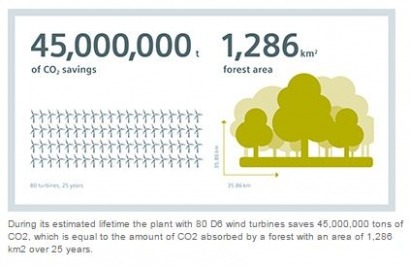
The brochures can be downloaded here.
The figures reported in each are based on life cycle assessments of four defined wind power projects: two offshore wind plants with 80 wind turbines, and two onshore wind projects with 20 wind turbines.
Central to the assessments is the energy payback time calculation. This is the length of time the wind power plant has to operate in order to produce as much energy as it will consume during its entire lifecycle.
In an onshore wind power plant with an average wind speed of 8.5 meters per second, the energy payback time of a Siemens SWT-3.2-113 wind turbine is 4.5 months, the company says.
This figure is based on a 20-turbine project, including a 13 kilometer grid transmission connection, and all the efforts involved covering material use, manufacturing, installation, operation and maintenance as well as dismantling and end-of-lifetime treatment.
The offshore life cycle assessment was based on a project with 80 Siemens D6 wind turbines. According to the company, during the turbines' estimated lifespan, the project will produce 53 million mHw of electricity and save 45 million tons of CO2, which is equal to the amount of CO2 absorbed by a forest with an area of 1,286 km2 over 25 years. T
his figure corresponds to a CO2 emission of only seven grams per kilowatt-hour (g/kWh) compared to the 865 g/kWh found with average global fossil power production, the company says.
For additional information:

